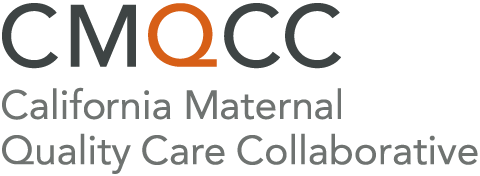Formerly published in 2010 and 2015 together with the California Department of Public Health, this is the second update to the Hemorrhage Toolkit to incorporate the latest evidence and best practices.
Throughout the revised toolkit, we have included resources to address inequities in quality of care and shared the voices of women and their lived experiences with hemorrhage. Management guidelines are in alignment with the 2021 Joint Commission Standards for Maternal Safety and National Partnership for Maternal Safety Hemorrhage Bundle.
-
Expanded guidance on obstetric hemorrhage risk factor assessment to include parameters for continued re-evaluation of risk and an updated Obstetric Hemorrhage Risk Screen Table
-
Increased emphasis on the importance of assessment for concealed hemorrhage
-
Updated medication protocols and recommendations on the use of tranexamic acid (TXA) as an adjunctive therapy
-
Multiple new chapters, including:
-
Management of Iron Deficiency Anemia
-
Secondary Obstetric Hemorrhage and Readmission
-
Implementing and Sustaining Maternal Quality, Safety and Performance Improvement for Obstetric Hemorrhage
-
The toolkit is available to download after logging into CMQCC's website. If you do not already have a CMQCC Account, you will need to complete a brief survey to initialize an account.
Download:
Improving Health Care Response to Obstetric Hemorrhage Toolkit, Version 3.0
Errata: Table Chart Appendix C and Flow Chart Appendix D erroneously depicted that methylergonovine is given in Stage 1 as a standard practice. The intention is to perform the interventions listed in Stage 1, but not hesitate to MOVE ON to a 2nd level uterotonic if there is no response to Stage 1 measures. Methylergonovine would be the preferred choice if the patient is not hypertensive due to the lower cost and relative lack of side effects, however, carboprost is acceptable for patients that do not have a history of asthma. Misoprostol should be reserved for patients that have contraindications to the other two medications. Both appendices have been edited to reflect this workflow.
Informational Webinar Recording and Webinar Slideset
Individual sections of the toolkit are also available to download by clicking on the links below:
Appendix A: Classification of Evidence Grading
Appendix B: Obstetric Hemorrhage Care Guidelines: Checklist Format
Appendix C: Obstetric Hemorrhage Care Guidelines: Table Format
Appendix D: Obstetric Hemorrhage Care Guidelines: Flowchart Format
Appendix E: Checklist: Carts, Kits and Trays
Appendix F: Simulations and Drills: Guidelines for Simulation Scenario Development
Appendix G: Simulations and Drills Sample Scenarios
Appendix H: Checklist for Patients Who May Decline the Use of Blood Products
Appendix I: Discharge Planning for Women with Hemorrhage During the Birth Hospital Stay
Appendix J: Sample Obstetric Outpatient Intravenous Iron Infusion
Appendix K: Obstetric Hemorrhage Risk Factor Assessment Screen
Appendix L: Hemorrhage ED Visit Stop Sign
Appendix L: Hemorrhage ED Visit Stop Sign, Spanish Language
Appendix M: Sample QBL Worksheet
Appendix N: Techniques for Quantitative Assessment of Blood Loss (QBL)
Appendix O: Terms and Techniques for Describing Blood Loss
Appendix P: Sample Paper Calculators for Quantifying Blood Loss
Appendix Q: Sample Schematic: Preadmission Planning for Women Undergoing Scheduled Cesarean Section
Appendix R: Medications for Postpartum Hemorrhage
Appendix S: Sample Massive Transfusion Policy – Torrance
Appendix T: Sample Massive Transfusion Procedure Miller Children’s and Women’s Hospital
Appendix U: Sample Code Crimson Postpartum Hemorrhage Management
Appendix V: A Guide to Recognizing Acute Stress Disorder in Postpartum Women in the Hospital Setting
Appendix W: Patient and Family Support Checklist for Postpartum Hemorrhage
Appendix X: Life After Postpartum Hemorrhage
Appendix Y: Resources for Postpartum Hemorrhage Survivors
Appendix Z: Sample Patient Summary Form: Obstetric Hemorrhage Event
Appendix AA: Sample Script: Provider - Patient Postpartum Hemorrhage Post-Event Discussion
Appendix BB: FAQ What do patients need to know?
Appendix CC: Sample Hemorrhage Rapid Debrief Form
Appendix DD: Sample Labor and Delivery Event Debrief Form
Appendix EE: Alert on Blood Transfusion Procedure Coding
Appendix FF: Obstetric Hemorrhage Sample Order Set Staged
